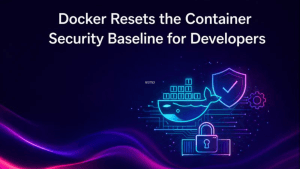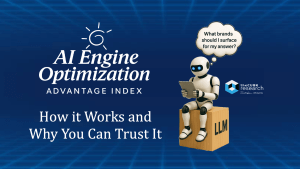Why AI Alone Won’t Modernize Your Applications
What application development leaders can learn from Google Cloud’s Chief Evangelist about building fast—and building smart.
Generative AI is transforming how we build and scale modern software, but speed without structure is a risky proposition. While AI-powered tools can generate front ends, automate code, and accelerate deployment pipelines, they don’t replace the foundational strategies needed to deliver secure, scalable, and maintainable applications. As organizations race to innovate, platform maturity—not hype—is the real differentiator.
In a recent conversation with Richard Seroter, Google Cloud’s Chief Evangelist, we explored the implications of today’s development trends and what they mean for builders, decision-makers, and platform teams. The takeaways were clear: AI is not a shortcut, but a force multiplier. To harness it well, teams need to evolve how they design systems, manage infrastructure, and equip developers with the right tools and autonomy.
“There’s a new AI framework on a weekly basis being shipped right now,” Richard noted. “We should have a lot of curiosity and humility… and figure out how to have the agility at your company to experiment faster.”
GenAI and the changing face of application development
The application landscape is expanding at breakneck speed. Our research at theCUBE shows that 24% of organizations aspire to release code on an hourly basis—yet only 8% can actually do so. This gap underscores a deeper reality: while developer expectations are increasing, many enterprises still rely on fragile delivery pipelines and fragmented tooling.
Richard and I discussed how this pressure is compounded by the rise of edge development, no-code/low-code platforms, and the democratization of software creation. With citizen developers now building apps alongside traditional engineering teams, the “who” behind development is shifting. But it’s not just about new personas—it’s also about new outcomes.
“Whether you want to call it citizen developers or not, any of us can build something,” Richard said. “The who is changing. The what is changing. The how is changing. And all of it is happening at the same time.”
This convergence—of roles, responsibilities, and results—is unlike anything we’ve seen since the birth of the internet or the mobile revolution. And AI is at the center of it all.
AI is not the strategy—it accelerates the strategy
While AI is undeniably reshaping the development lifecycle, it can’t replace the core principles of good software engineering. It doesn’t eliminate the need for a clear API strategy, strong data governance, or automated testing frameworks. In fact, these are prerequisites.
“You can’t just skip ahead and be an AI-native company,” Richard warned. “You need a mature API strategy. You need strong observability. You need to have finished some of your cloud-native transformation so you know how to ship software.”
This is a critical insight. AI doesn’t magically solve for process gaps or broken delivery models. Without a modern, secure, and efficient release pipeline, AI-generated code can do more harm than good. Organizations need to view AI as a catalyst—not a crutch. It can help write code, suggest architectures, or generate documentation—but it can’t be expected to know the business logic, security context, or organizational priorities on its own.
“The AI works for me—I don’t work for the AI,” Richard emphasized. “You still need to take ownership of the decisions it helps you make.”
Platform engineering: The path to sustainable velocity
As software complexity increases, there’s growing consensus around the need for platform engineering. Richard described this shift as a response to the “do it all” developer myth. The idea that a single generalist can build front ends, back ends, infrastructure, and security models is both unrealistic and unsustainable.
Instead, organizations are embracing internal developer platforms (IDPs) that abstract away complexity and standardize common workflows. This not only improves speed and consistency, but also strengthens security postures and compliance guardrails.
“Why are we asking everyone to do everything?” Richard asked. “Maybe we’ll get better at this when we have experts define amazing platforms—and developers build on top of those.”
This platform-first mindset is especially relevant in the age of AI. With tools like Gemini App Canvas, teams can spin up back-end APIs or front-end components in seconds. But as Richard reminded us, code is just one part of the equation. You still need pipelines, permissions, policy, and people to do the rest.
Modernization means more than rewriting
A particularly compelling part of our discussion centered around the reality of modernization. Many CIOs believe modernization requires rewriting legacy apps—but that’s not always the case. Richard explained how organizations are layering new front-end experiences, API integrations, or AI interfaces on top of heritage systems, effectively encapsulating them as “systems of record.”
“Even if you’re a buy shop, you’ll be writing software,” he said. “You’ll be creating new experiences, wrapping legacy systems in APIs, and mashing up interfaces. That’s modernization too.”
This hybrid approach enables faster time-to-value and creates a bridge between old and new—without the disruption of ripping and replacing core systems. It’s modernization for the real world, not just the whiteboard.
Final thoughts: From experimentation to execution
As we look ahead to events like Google Cloud Next and KubeCon, it’s clear that the future of app development is still being written. Standards are still forming. Tools are still evolving. And AI is still finding its place in the stack.
But one thing is clear: successful teams won’t be those that adopt the most tools—they’ll be the ones that learn the fastest. Experimentation, iteration, and curiosity will separate leaders from laggards.
“This isn’t just a vendor-led hype cycle,” Richard concluded. “A lot of innovation is coming from the bottom up. Pay attention to your developers. Pay attention to your customers. That’s where the real transformation is happening.”I couldn’t agree more. Modern app development requires balance—between speed and structure, innovation and accountability, people and platforms. AI is the accelerant. It’s up to us to build the engine.



